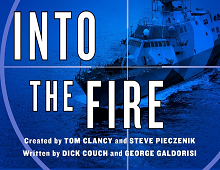The World’s Next Flashpoint

If there is one place on earth where the ambitions of the United States and China collide, it is the South China Sea. This body of water all-but-dominates the news weekly, with China making increasingly aggressive claims to this crucial body of water. Is it any wonder that many think World War III could well start there. We wrote about this in the U.S. Naval Institute Proceedings. Here is part of what we shared:
Whether it is the intelligence community, the military, industry, or just individuals attempting to get some notion of what the future holds, extrapolating current trends to determine likely outcomes in years “downstream” is absolutely essential to stay one step ahead of any current – or future – adversaries. This is the work of military and intelligence analysts and is more essential today than ever before.
Access and use of the global commons, particularly the sea and the air space, is a core element of U.S. military and commercial power. In times of war, control of the commons may be ensured by military means. In peacetime it is sought through international law and diplomacy and through limited military responses when the rules governing use of the commons are breached. In some cases, a peacetime incident may quickly result in a reaffirmation of traditional freedoms of the sea. In others, a more concerted effort, combining diplomacy with demonstration, is needed to return to adherence to international norms. This latter combination appears to be the case regarding China and the South China Sea. As noted recently by Patrick Cronin and Paul Giarra:
Chinese assertiveness over its region is growing as fast as China’s wealth and perceived power trajectory. Beijing’s unwelcome intent appears to give notice that China is opting out of the Global Commons.
Though not a new phenomenon, China’s increasingly assertive activities in the South China Sea are drawing concern that the country is seeking regional hegemony at the expense of its neighbors in Southeast Asia as well as the United States, Japan, and South Korea.
You can read this entire article here:
https://georgegaldorisi.com/wp-content/uploads/Galdorisi-April-11.pdf










